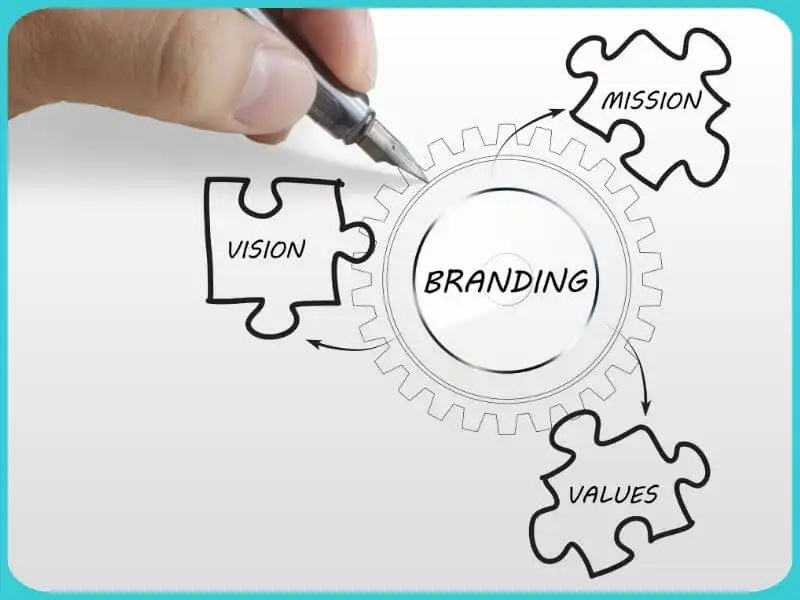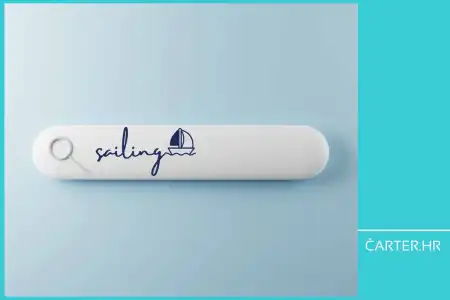
Are you just starting to create an identity for your company? Are you maybe looking to refine your current branding? Find out how you can define and successfully articulate your brand identity in a way that’s both authentic and impactful.
Yes, you have a yacht charter company.
And yes, you have a large fleet, bareboat, skippered, luxurious vessels, catamarans ... whatever you have.
The thing is – yes, you are actually renting vessels.
But how does your audience, your guest, react to you? Do they praise you and recommend you to others? Do they leave 5-star reviews and recommend you to their friends?
Do you think you connect with your guests on a deeper level? Do they recognise you as a brand?
(Do you even have one)?
Your brand identity is all of you - your company's values, mission, and vision – all these things that people usually have on their website as bullets.
But do you actually have these elements that shape how people perceive your business?
A strong brand identity is the foundation of long-term success, enabling you to build trust, foster loyalty, and differentiate yourself from competitors.
It’s the promise you make to your guests - and, more importantly, how consistently you deliver on that promise.

Brand identity foundation - your vision statement
Your vision statement is more than just a slogan you put on your website or your marketing materials - it’s path you want your yacht charter company to go.
It captures your aspirations and the long-term impact you aim to have on the yacht charter market and your guests.
A compelling vision statement guides your company’s strategic decisions and inspires your team to work toward a common goal.
When crafting your vision statement, consider what you want your company to be known for in the years to come.
Here are some examples of clear and aspirational vision statements that can set the tone for your entire brand identity, influencing everything from your marketing strategies to your operational decisions:
- Croatian most sustainable luxury yacht charter service, setting new standards for eco-friendly sailing.
- We redefine the luxury yacht charter experience, creating unforgettable journeys that blend comfort, adventure, and personal service.
- Leaders in yacht charter industry innovation, offering exceptional experiences that connect our guests with the most stunning destinations together with modern digital solutions.

Brand identity second step - a clear mission statement
If the vision statement is where you want to go, the mission statement is how you plan to get there.
It should explain your yacht charter company’s purpose and the core activities that drive your business as a whole.
A mission statement is the thing that drives your strategic and operational decisions and communicates to your guests what they can expect when they choose your services.
Your mission statement should be distinct, actionable, and aligned with your overall vision.
It’s not about what you do in a general sense but how you do it in a way that sets you apart from others.
If your vision is to become a leader in sustainability, your mission should focus on implementing green practices in your daily operations, from fuel-efficient engines to eco-friendly onboard amenities, cleaning supplies and such.
Examples of clear and direct mission statements that give a sense of the company’s priorities and approach to fulfilling its vision:
- Providing eco-conscious sailors with sustainable yacht charters that minimise environmental impact without influencing either comfort or enjoyment on the sea.
- Delivering personalised experiences that surpass all expectations through excellent service, meticulous attention to detail and passion for exploring Croatian Adriatic.
- Offering innovative, adventure-filled yacht charters that inspire a love for the Adriatic while ensuring complete safety and satisfaction.

Brand identity core - core values
Core values are beliefs that guide your company’s behaviour, decision-making, and interactions with guests, associates and even employees.
These principles shape your company culture and define what you stand for.
Strong core values serve as the foundation of your brand identity, providing consistency in how your company is perceived from the inside as well as the outside.
When defining your core values, consider what is most important to your company.
Are you committed to sustainability, customer-centric service, innovation, or perhaps all three?
Your values must be authentic and reflect the true nature of your business. It means you should actually do and provide for what you “advertise” on the outside.
Your mission and vision have to create a unified narrative that your target audience responds to.
Here are some examples that clearly define and consistently uphold your core values to create a strong, authentic brand identity:
- Sustainability - We prioritise environmental stewardship in all our operations, from sourcing materials to eco-friendly itineraries.
- Customer-centricity - We are dedicated to delivering personalised service that exceeds our guest's expectations at every touchpoint.
- Integrity - We do our business with honesty, transparency, and a commitment to doing what’s right for our guests and employees
Aligning brand identity with guests expectations
You have to completely understand who your target audience is to successfully align your brand identity with their expectations.
You must know who they are and what they value and expect from a yacht charter service.
Your vision, mission, and values should ring true to your target market's desires and needs so your brand identity feels relevant and appealing.
Start by researching your target market demographics, preferences, and pain points. Are they looking for luxury and exclusive experiences, or are adventure seekers drawn to unique destinations?
Use this information to shape your brand identity in a way that speaks directly to your desires.
If sustainability is important to them, emphasise your eco-friendly practices in your branding. If they value exclusivity, highlight the personalised services and unique experiences you offer.
Strategies to align your brand identity and to create a better connection with your audience that could lead to greater loyalty and repeat business are:
- Surveys and feedback - Regularly gather guests' feedback to understand their expectations. Use this data to refine your brand identity.
- Market research - Stay informed about trends and preferences within your target market. This allows you to adjust your brand identity as guest expectations evolve (as they constantly do).
- Guest (buyer) personas - Make detailed guest personas to guide you. This way, your messaging and offerings will always be aligned with what your customers want.

Implementing and communicating your brand identity
Defining your brand identity is just the start; the real job is to effectively implement and communicate it across all aspects of your business.
This requires an approach with which you’ll embed your vision, mission, and values in your company’s operations and communicate them clearly to all.
Steps to take to integrate your brand identity:
- Internal alignment - All employees must understand and be committed to the company's brand vision, mission, and values. This can be achieved through regular education, communications, and a strong company culture.
- Operational integration - Include your brand identity in all your business processes, from customer service protocols to digital marketing strategies, i.e., make sure your brand is consistently represented in everything you do.
- Visual and verbal identity - Develop a consistent visual identity (logos, colours, typography) and verbal identity (tone of voice, messaging) that reflect your brand’s core values and mission (and use these elements consistently across all marketing materials and communication).
You must effectively enforce and communicate your brand identity so that your vision, mission, and values are not just words on a page but actively shaping how your company runs and is perceived by the world.
And by the world, we mean your future, present and past guests.
If you need assistance in any aspect of your brand identity, contact us, as we know what you need and how to help you.
Subscribe to our newsletter and follow us on our social media, Facebook, Instagram, and LinkedIn.
Categories of trends
- News
- Sale
- Marketing
- SEO
- Web design
- Social media
- Technology
- Regulations
- Management
- Education
- Finances
- User experience
Newsletter
Sign up for the newsletter and receive the latest trends and tips straight to your inbox



